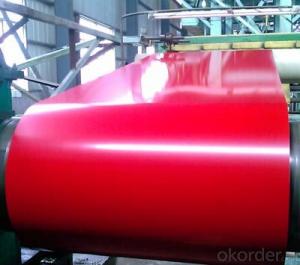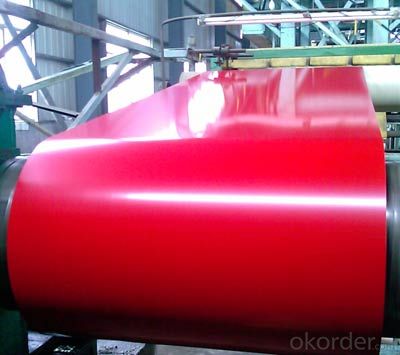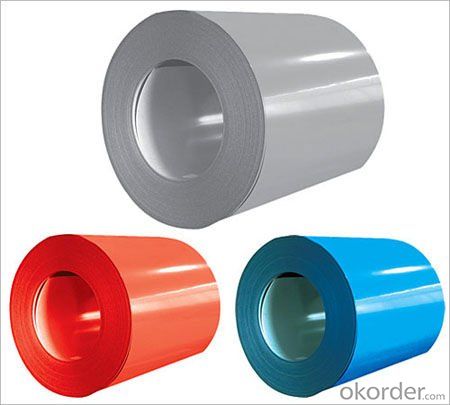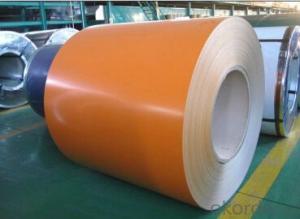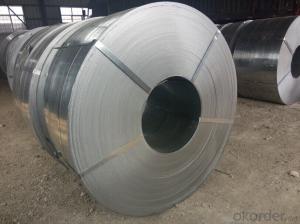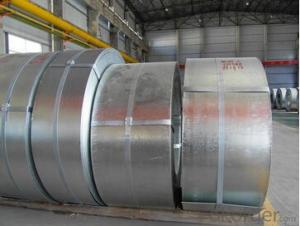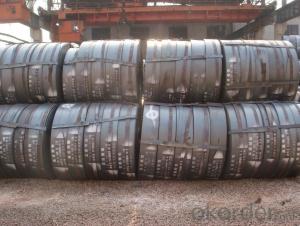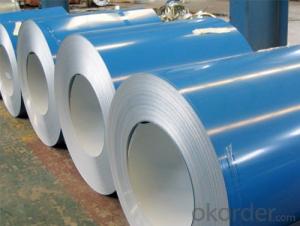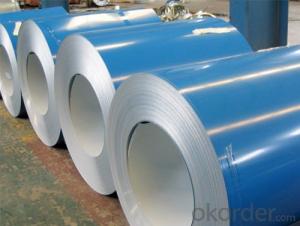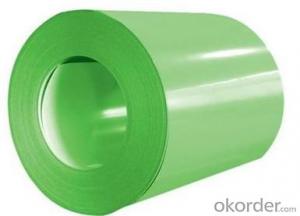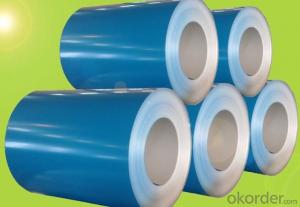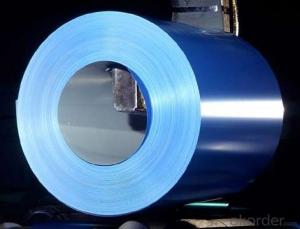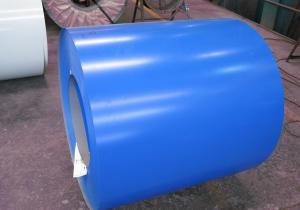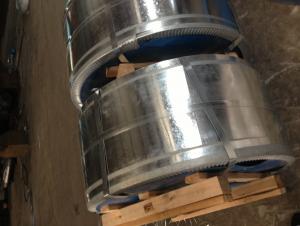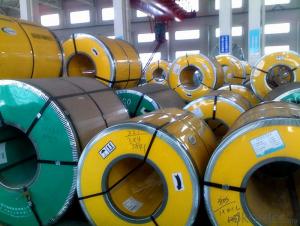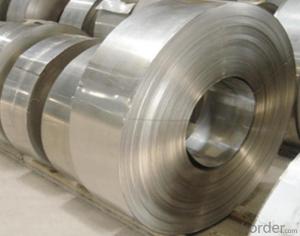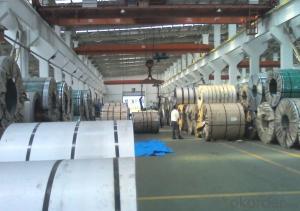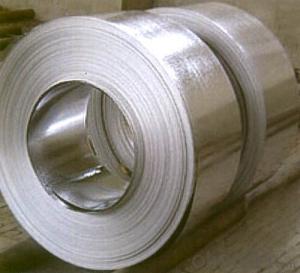Pre-painted Galvanized/Aluzinc Steel Sheet Coil with Prime Quality and Lowest Price color is red
- Loading Port:
- Shanghai
- Payment Terms:
- TT OR LC
- Min Order Qty:
- 100 m.t.
- Supply Capability:
- 10000 m.t./month
OKorder Service Pledge
OKorder Financial Service
You Might Also Like
1.Structure of Pre-painted Galvanized/Aluzinc Steel Coil Description
With GI (aluzinc) as base metal, after pretreatment (degrease and chemical treatment) and liquid dope with several layers of color, then after firing and cooling, finally the plate steel is called pre-painted galvanized (aluzinc) steel. Pre-painted galvanized steel is good capable of decoration, molding, corrosion resistance. It generally displays workability, durability and weather resistance.
2.Main Features of the Pre-painted Galvanized/Aluzinc Steel Coil
• Excellent corrosion resistance
• Excellent weather resistance
• Capability of decoration, molding, corrosion resistance
• Workability, durability
• Excellent heat resistance performance
• High strength
• Good formability
• Good visual effect
3.Pre-painted Galvanized/Aluzinc Steel Coil Images
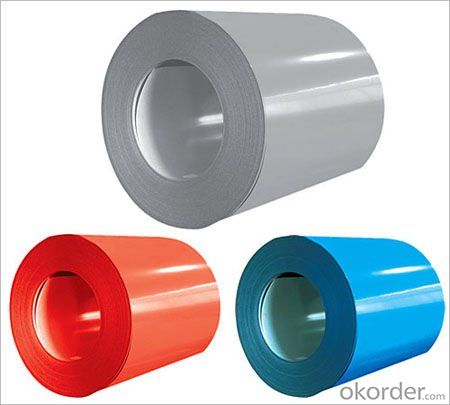
4.Pre-painted Galvanized/Aluzinc Steel Coil Specification
Quality standar: JIS G3312 CGCC & CGLCC
Hardness of P: Both soft and hard quality are available
Surface finish: with or without protect film
Thickness : 0.14-1.20 mm
Width : 914mm, 1000mm, 1220mm and 1250mm, thickness 600-1250mm is available
Finish by coil or sheet: Both sheet and coil are available
8Zinc coating: 60-275G/M2, both sides
Paint thickness for top side : 5 micron primer + (10-20) microns modified polyester, blue color code.
Paint thickness for back side: (5-10) microns Epoxy
Weight per coil: 4-6 tons, also can be upon customer's requirements
Max loading weight in one 20ft container : 25 tons generally
5. FAQ of Pre-painted Galvanized/Aluzinc Steel Coil
We have organized several common questions for our clients,may help you sincerely:
1. What is the minimum order quantity ?
Our MOQ is 50mt for each size. And we will consider to give more discount if you make big order like 1000 tons and more. Further more, the more appropriate payment term your offer the better price we can provide.
2. How long can we receive the product after purchase?
Usually within thirty working days after receiving buyer’s advance payment or LC. We will arrange the factory manufacturing as soon as possible. The cargo readiness usually takes 15-25 days, but the shipment will depend on the vessel situation.
3. How to guarantee the quality of the products?
We have established the international advanced quality management system,every link from raw material to final product we have strict quality test;We resolutely put an end to unqualified products flowing into the market. At the same time, we will provide necessary follow-up service assurance.
- Q: What are the packaging options available for steel strips?
- Customers have several packaging options to choose from for steel strips, depending on their specific requirements and preferences. Some commonly used packaging options are as follows: 1. Coils: Steel strips can be tightly wound into coils, providing a compact and efficient packaging solution. Coils are often used for transportation and storage purposes. 2. Spools: Another option is to package steel strips on spools, which are cylindrical devices used for winding and storing the strips. Spools offer ease of handling and are suitable for various applications, including wire manufacturing and precision cutting. 3. Reels: Reels, which are typically larger than spools, are commonly used for heavy-duty applications or when packaging larger quantities of steel strips intended for industrial machinery. 4. Bundles: Steel strips can be bundled together using steel straps or other binding materials. Bundles are often used for larger or longer steel strips, providing stability and protection during transportation. 5. Pallets: Steel strips can be stacked and secured together on pallets, which can accommodate coils, spools, or bundles. Pallets make handling convenient and can be easily transported using forklifts or other equipment. In addition, packaging options may also include protective measures such as shrink-wrapping, plastic covers, or wooden crates to ensure the safety and integrity of the steel strips during storage and transportation. The choice of packaging option depends on factors such as the size and shape of the steel strips, intended usage, and specific customer requirements.
- Q: Can steel strips be used in the production of packaging materials?
- Yes, steel strips can be used in the production of packaging materials. Steel strips are commonly used in the manufacturing of various types of packaging materials, such as metal straps, bands, or seals. These packaging materials are widely used in industries like shipping, transportation, and warehousing to secure and bundle different types of goods and products. Steel strips provide excellent strength and durability, making them suitable for heavy-duty applications. Additionally, they offer resistance to corrosion and can withstand rough handling, ensuring that the packaged items remain secure and protected during transit.
- Q: What is the difference between annealed and hardened steel strips?
- Two different forms of steel, annealed and hardened steel strips, have undergone distinct heat treatment processes resulting in unique physical properties. To anneal steel strips, they are heated to a high temperature and then slowly cooled down, a process known as annealing. This relieves internal stresses and reduces hardness, making the steel more malleable and easier to work with. Annealed steel strips are typically softer, more ductile, and possess lower tensile strength. They find applications in manufacturing automotive components, household appliances, and metal furniture where formability and flexibility are crucial. On the contrary, hardened steel strips undergo a different heat treatment process called hardening. This involves heating the steel to a high temperature and then rapidly cooling it, often through quenching in oil or water. This rapid cooling causes the steel to harden, resulting in increased strength, wear resistance, and durability. Hardened steel strips are commonly used in the production of cutting tools, springs, and machine parts exposed to high stress or abrasive conditions where strength and toughness are vital. In conclusion, the key distinction between annealed and hardened steel strips lies in their physical properties and the heat treatment processes they undergo. Annealed steel strips are softer and more malleable, while hardened steel strips are harder and more resistant to wear and deformation. The choice between the two depends on the specific application and desired characteristics of the steel.
- Q: How are steel strips used in the production of musical instruments?
- Steel strips are commonly used in the production of musical instruments to create various components such as keys, springs, and reeds. These strips are shaped, cut, and incorporated into the instrument's mechanisms to provide durability, flexibility, and precise movements, ultimately enhancing the instrument's sound and playability.
- Q: How do steel strips perform in terms of corrosion resistance?
- The presence of alloying elements, such as chromium and nickel, in steel strips generally results in good corrosion resistance. These elements create a protective layer known as a passive film on the surface of the steel, acting as a barrier against corrosive substances and preventing them from reaching the steel below. The thickness and composition of this film can vary depending on the specific steel grade and environmental conditions. Stainless steel, among other steel strips, displays exceptional corrosion resistance and is highly resistant to rusting, staining, and other forms of corrosion. It is commonly employed in environments where exposure to moisture, chemicals, or extreme temperatures is a concern, including marine applications, food processing industries, and architectural structures. However, it is important to acknowledge that the corrosion resistance of steel strips can be affected by various factors, such as the presence of impurities, the quality of the surface finish, and the specific conditions in which the steel is exposed. In some instances, additional protective coatings or surface treatments may be necessary to enhance the corrosion resistance of the steel strips. In conclusion, steel strips are generally recognized for their good corrosion resistance. Nevertheless, the effectiveness of this resistance relies on multiple factors and should be evaluated within the context of the particular application and environment in which they will be utilized.
- Q: How do steel strips handle exposure to UV radiation?
- Steel strips are not significantly affected by exposure to UV radiation. Unlike certain materials that can degrade or change in properties when exposed to UV rays, steel is largely resistant to such effects. This makes steel strips a reliable choice for applications where UV radiation is present, as they can maintain their strength and structural integrity over time.
- Q: What are the different coating options available for steel strips?
- Some of the different coating options available for steel strips include galvanized coatings, which provide protection against corrosion; organic coatings, such as paint or powder coatings, which offer aesthetic appeal and additional durability; and metallic coatings, such as zinc-nickel or aluminum coatings, which provide enhanced corrosion resistance and conductivity. Other options may include phosphate coatings for improved adhesion or specialty coatings for specific applications, such as lubrication or insulation.
- Q: How are steel strips packaged for shipping?
- Steel strips are typically packaged in a manner that guarantees protection and allows for easy handling during shipping. The packaging process begins by tightly coiling the steel strips into rolls. These rolls are then enveloped with a layer of protective material, such as plastic or paper, to prevent any harm or scratches while in transit. To further secure the rolls, it is common to place them on wooden pallets or steel skids, which provide stability and facilitate handling. Strapping or bands are often utilized to fasten the rolls to the pallets or skids, preventing any movement or shifting during transportation. Once the rolls are securely fastened, they are either placed in shipping containers or loaded onto trucks or flatbeds for transportation. The selection of containers or trucks is based on the dimensions and weight of the steel strips, ensuring a safe and efficient journey. In certain instances, steel strips may be packaged in bundles rather than coils. Bundles are formed by stacking multiple strips and securing them with bands or wire ties. These bundles are then wrapped with protective material and placed on pallets for shipping. Overall, the packaging of steel strips for shipping is meticulously carried out to guarantee their safety and minimize potential damage during transportation, enabling them to arrive at their destination in optimal condition.
- Q: How do steel strips perform in fire-resistant applications?
- Steel strips perform well in fire-resistant applications due to their high melting point and excellent structural integrity. They are able to withstand high temperatures for extended periods of time without losing their strength or shape, making them ideal for use in fire-resistant construction materials such as fire doors, fireproof safes, and fire-rated walls. Additionally, steel strips have low thermal conductivity, which helps to minimize heat transfer during a fire, further enhancing their fire-resistant properties.
- Q: How do steel strips respond to different surface coating techniques?
- Different surface coating techniques can yield different responses from steel strips, depending on the specific method employed. Multiple options are available for coating steel strips, including galvanizing, electroplating, powder coating, and painting, each with its own strengths and weaknesses. Galvanizing, a commonly used technique, offers protection against corrosion by applying a layer of zinc onto the steel strip through hot-dip or electroplating processes. This coating provides exceptional durability and resistance to corrosion, making it well-suited for outdoor applications in industries such as construction, automotive, and infrastructure. Electroplating is another method used to add a thin layer of metal to the surface of steel strips. It can enhance the steel's appearance, improve corrosion resistance, or provide specific functional properties. Nickel, chromium, and tin are common metals used for electroplating steel strips. This technique ensures excellent adhesion and uniformity in the coating, resulting in a high-quality finish and protection against corrosion. Powder coating, a popular technique, involves the application of a dry powder onto the surface of the steel strip. The powder is then cured under heat, resulting in a durable and visually appealing coating. Powder coatings offer excellent resistance to corrosion and chemicals, as well as a wide range of color options. This technique is widely used in applications where aesthetic appeal is important, such as furniture, appliances, and architectural components. Painting, another commonly used technique, entails applying a liquid paint onto the surface of the steel strip, which subsequently dries to form a protective layer. Painting allows for a wide range of colors, finishes, and levels of protection against corrosion. However, it may not provide the same level of durability and resistance as other coating techniques, making it less suitable for harsh environments or heavy-duty applications. In conclusion, the response of steel strips to various surface coating techniques can vary. The choice of coating method depends on specific application requirements, such as corrosion resistance, durability, aesthetic appeal, and functionality. Each coating technique possesses its own advantages and limitations, necessitating careful consideration to select the most appropriate method for achieving the desired outcome.
Send your message to us
Pre-painted Galvanized/Aluzinc Steel Sheet Coil with Prime Quality and Lowest Price color is red
- Loading Port:
- Shanghai
- Payment Terms:
- TT OR LC
- Min Order Qty:
- 100 m.t.
- Supply Capability:
- 10000 m.t./month
OKorder Service Pledge
OKorder Financial Service
Similar products
Hot products
Hot Searches
Related keywords
